As the world of marketing changes, so does the way that businesses need to market themselves in order to stay ahead of the competition. Inbound marketing is a method of marketing that has been proven to be far more effective than traditional marketing techniques, and provides a higher ROI for businesses that invest in it.
What is Inbound Marketing?
Inbound marketing is a holistic approach to marketing that focuses on attracting, engaging, and delighting customers. Unlike traditional marketing techniques that interrupt potential customers with things like ads and cold calls, inbound marketing uses content and SEO to draw people in and then nurture them into becoming loyal customers.
Why is Inbound Marketing important in 2022?
One of the biggest benefits of inbound marketing is that it provides a higher ROI than traditional marketing methods. For every dollar spent on inbound marketing, businesses see an average ROI of $38. That means for every $100 you spend on inbound marketing, you can expect to see a return of $3800. In comparison, traditional outbound methods have an ROI of just $22 for every $100 spent.
How do Inbound Leads make 10x Higher ROI?
The average cost per lead for inbound marketing is $61, while the average cost per lead for outbound marketing is $373. That means inbound marketing provides a higher ROI because it costs less to generate leads.
How does Inbound Marketing Work?
In order to understand how Inbound Marketing works, let’s first take a look at the buyer’s journey:
The buyer’s journey is the process that buyers go through when they decide they need a product or service and then eventually make a purchase. It consists of three stages:
Awareness
This is the stage where buyers become aware of their problem or need.
Consideration
This is the stage where buyers research solutions to their problem or need.
Decision
This is the stage where buyers choose a particular product or service to solve their problem or need.
In order for businesses to market effectively to their target audience, they need to create content that speaks to each stage of the buyer’s journey. That way, they can attract leads, nurture them into customers, and then delight them so they become loyal customers.
Inbound marketing is an effective way to market to buyers because it aligns with the way that they make purchasing decisions. By creating helpful, informative content, businesses can attract leads and then nurture them into customers. And, because inbound marketing costs less per lead than traditional outbound marketing techniques, businesses see a higher ROI when they invest in it.
What are some Inbound Marketing Tactics?

Content Creation
Creating helpful, informative, and keyword-optimized content is essential to inbound marketing. By creating blog posts, ebooks, guides, and other forms of content, businesses can attract leads and then nurture them into customers.

Social Media Marketing
Social media is a great way to connect with potential and current customers. By sharing helpful content and engaging with your audience, you can build relationships and trust with potential and current customers.

Search Engine Optimization
SEO is the process of optimizing your website and content for Google search. By ranking higher in Google, you can increase your visibility and attract more leads.

Lead Nurturing
Lead nurturing is the process of building relationships with potential customers. By sending helpful emails, you can keep your business top-of-mind and eventually turn leads into customers.
Here are 3 Basic Steps to evaluate how to make your marketing plan future ready:
- Evaluate your Customer’s Needs: The first step is to take a close look at your current and future customers and how do you provide them pre-sales and post sales information including the actual content, medium and timing.
- Prepare an Ideal Buyer’s Journey: From lead capturing (introduction) to sale (final goal), prepare a step wise journey consisting of your entire sales process. This includes initial introduction, nurturing and one or more call to actions.
- Create an Engagement Plan: Based on various touch points i.e. the instances where your customer or prospect interacts with your brand, prepare content and call to actions to include or remove the customer from pipeline as unqualified leads.
By following these steps, you can create an inbound marketing plan that is aligned with the way your buyers make purchasing decisions. And, by investing in inbound marketing, you can see a higher ROI than with traditional outbound marketing techniques.
